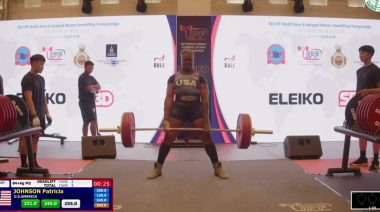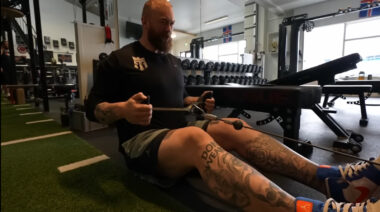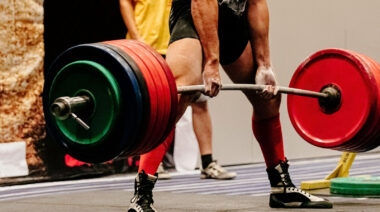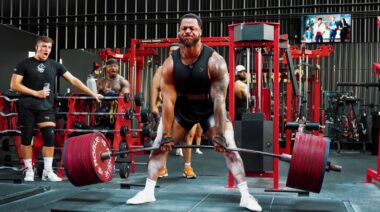This is not your typical strength-training article. Most articles (including mine) delve into the details of training. Stuff you should be doing. But instead, I’m going to suggest five aspects of lifting you can stop thinking about so much.
That’s pretty cool right? Five things you don’t need to worry about any more. Five things you can scratch off your list.
Because I believe everyone has a finite amount of free will. An allowance per day, if you like. I know plenty of high-flying businessmen who prefer someone else to make their training, eating, and scheduling decisions. They want to save their allowance of free will for the stuff in the boardroom. The decisions that matter.
“Spending” too much free will making a decision of little consequence uses up your precious allowance, which leaves less in the kitty for more important decisions. So, here are five things I’m going to take out of your hands, or at least help you to answer simply, so you can spend your stash on the stuff that matters.
1. What Program You Are Doing
Say what? I’m telling you not to be concerned about the program you are doing? Well, yes, to an extent. To see if a program works for you, you have to do the program. You can’t assess it from the sidelines. And you have to stick with it for a reasonable period of time to be able to draw any decent conclusions.
It doesn’t matter who else is or isn’t getting results from the program. If you’re not getting results, then no matter how good the program is, it’s no good for you. And if you’re getting results, you’re most of the way there. Getting results in the gym is hard. If you’re picking up sustainable gains, don’t worry about where the next lot of gains is going to come from and whether you need to switch programs. You’re already on the gains train – why would you get off? Stay on that program for as long as you can.
My recommendation: Ask yourself three questions. Is this programming getting my results? Can I carry on doing it for a long time? Do I enjoy it? If the answer to all three is yes, then I can’t see a reason you wouldn’t do the program, and carry on doing it.
2. What Your 1RM Max Lift Is
Even if your sport is reliant on max lifts at competition, this doesn’t mean you need to keep checking to see where you’re at on a week-to-week basis. And if your sport isn’t dependant on max lifts, then there’s definitely nothing to worry about. Your game-day performance is what matters. So why are you spending so much time testing your 1RM?
The more you keep checking your max, the further you’re likely to be taking yourself from actually improving it. For most mere mortals, taking our body up to and beyond its absolute limit is not the best way to get stronger and steer clear of injury.
‘”Spending’ too much free will making a decision of little consequence uses up your precious allowance, which leaves less in the kitty for more important decisions.“
My recommendation: Keep hitting the numbers. The real trick is to find a marker that correlates closely with your max lift going up. A rep range that has a good training effect (e.g. a heavy triple) and/or a lift with less of a recovery hit (e.g. a shorter range of motion lift variation). If you need to, you can then use that marker to confirm your 1RM competition lift is going up without having to perform the full lift and taking the nervous system hit that goes with it.
3. Which Weightlifting Shoe to Get
Let’s be honest. For the level most of us are working at, the specifics of the weightlifting shoe are mostly irrelevant. The size of the heel, the weight, the make, or whether they are this season’s model are all of little consequence compared to just getting a pair of shoes and training in them. I see many people delay a purchase of shoes while they research these factors. There’s no need.
Before anyone says anything – yes, I’ve written about weightlifting shoes before. And of course I have a preference. I’m a self-confessed equipment junkie. But as with most training related matters, that preference was formed through trial and error.
My recommendation: Make sure your shoes feel solid underfoot and that they fit snugly. If they do, you’re onto a winner. Your lifting is going to become instantly better when you step into some weightlifting shoes, so just grow a pair and get a pair.
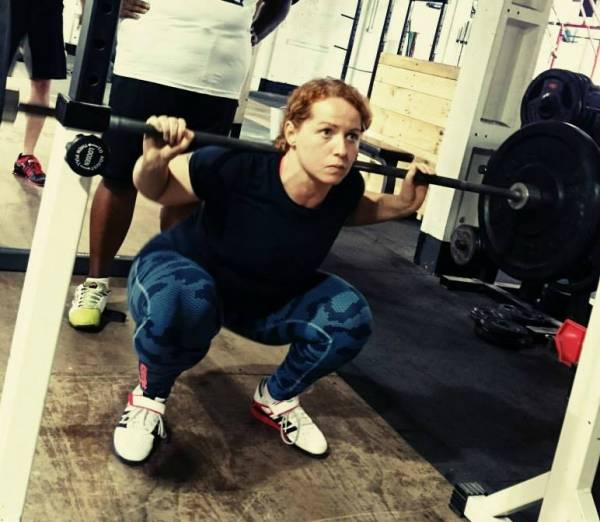
4. What Type of Belt to Get
Aside from weightlifting shoes, this is the most common equipment-related question I get. My reply is always the same – what do you want your belt for? The answer can be telling. Most will answer with their sport – weightlifting, powerlifting, CrossFit, or whatever.
This is helpful and answers a lot of questions straight off. If you need to move, get a belt that allows you to do so, not something that is restrictive. If you need to keep the bar close, don’t get a belt with a massive buckle. That said, I’m more interested in the deeper reasons why a belt is required. Support? Injury prevention? Re-injury prevention? Warmth? Psychological aid?
“No amount of reading (including this article) can tell you what works best, for you, right now, in a practical setting.”
My recommendation: Dig into the reasons why you want a belt. Then stop fretting. Get one, and learn how to use it. Effective use of a belt through bracing and breathing techniques is a skill, just like anything else. If you don’t already consistently apply solid bracing and breathing techniques to each of your lifts, put your belt purchase on hold and invest in a course to learn these essential skills.
5. What Your Lifting Style Is
High-bar or low-bar squat? Sumo or conventional deadlift? These are not questions I can answer for you. By all means try various approaches. But stop trying to force yourself into positions your body is not designed for because you’ve heard a particular variation is “better.” Using a variation your body isn’t designed for will counteract any purported benefit of that approach.
I don’t believe any one lifting style is universally the best. The combination of straight up science and your body anthropometrics will handle what is best for you. For example, I don’t teach “high-bar” or “low-bar” squat. I teach people how to squat in accordance with what science tells us and what your body tells you.
My recommendation: Ask yourself – Does this style work for me, or am I working against it? Does this carryover to or detract from my sport (think in terms of movement, not just muscle)? Can I create tension in the start position and maintain tension throughout the lift or do I struggle to do either? These will inform your decision in a simple manner.
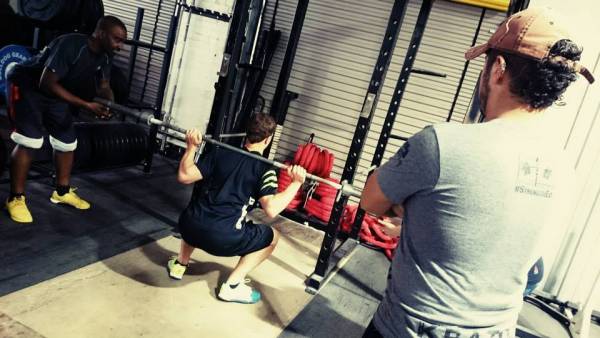
Just Do It
The overriding message with all the above points is that getting on with it and doing something will provide you with far more benefit than deliberating on the point itself. Each of these points requires some degree of experimentation to work out what is best for you.
And that’s the crux of it all. No amount of reading (including this article) can tell you what works best, for you, right now, in a practical setting. See you under the bar.
Check out these related articles:
- 3 Easy Ways to Be Stronger and Better at Everything
- 4 Reasons You’re Not Getting Stronger
- Don’t Let Mobility Stand In the Way of Your Gains
- What’s New on Breaking Muscle Today
Photos courtesy of Strength Education.

